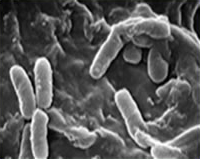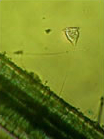Pathogens
Let's look closer at the four main pathogens: bacteria, virus, fungi, and protozoa.

Bacteria (pronounced: bak-tir-ee-uh) are tiny organisms that get nutrients from their environments, and that environment is sometimes you or some other living being. A certain number of bacteria are good for our bodies—they help keep the digestive system in working order and keep harmful bacteria from moving in. Bacteria can also cause trouble—ever had a cavity, urinary tract infection, or strep throat? Bacteria cause all these infections.

Viruses (pronounced: vye-rus-iz) cannot live on their own. In order to survive, grow, and reproduce, they need to be inside other living organisms. Most viruses can only live for a very short time outside other living cells. But some viruses, such as the kind that cause hepatitis (an infection of the liver), can survive on surfaces for a week or longer and still be able to cause infections. Viruses are responsible for not-so-serious diseases like colds as well as extremely serious diseases like smallpox.

Fungi (pronounced: fun-jye) are multi-celled, plant-like organisms that usually aren't dangerous in a healthy person. Fungi cannot produce their own food from soil, water, and air; so instead, they get nutrition from plants, food, and animals in damp, warm environments. Two common fungal infections include athlete's foot and yeast infections.

Protozoa (pronounced: pro-toe-zo-uh) are single-celled organisms like bacteria. Protozoa love moisture, so intestinal infections and other diseases they cause are often spread through contaminated water.